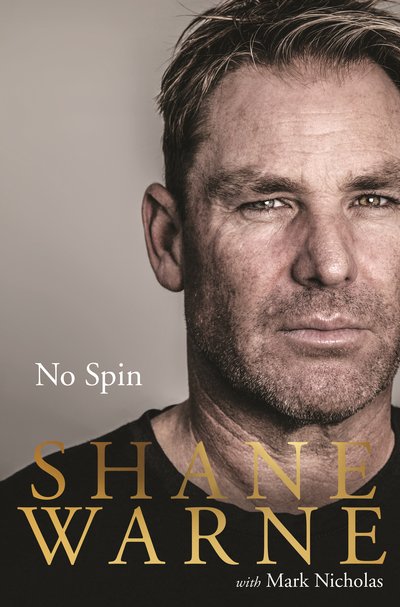Shane Warne:- No Spin
0 Whatever you may think of Shane Warne, there has never been a dull moment. No Spin not only covers an extraordinary career; 708 test wickets, a couple of World Cups, the original Ball of the CenturyTM and so much more, but it is the never ending sub-plots that have followed him around.
Whatever you may think of Shane Warne, there has never been a dull moment. No Spin not only covers an extraordinary career; 708 test wickets, a couple of World Cups, the original Ball of the CenturyTM and so much more, but it is the never ending sub-plots that have followed him around.
The match fixing allegations, “Can’t bowl, can throw”, the charity foundation, that multi-tiered private life, the drugs ban and so much more; he doesn’t hide from any of it.
Those two words at the bottom right hand corner of the dust jacket might raise concerns for some. To be fair, Nicholas has done a really good job here. When you read the book you don’t once hear his voice. This is very much Warnie’s book, and Nicholas has reminded us that, beneath the Channel 9 broth, he is a very good analyst.
Humility has never been a strong point of Warne and that comes through in spades. And that’s how it should be; unconvincing faux humility would have been a disaster. As the title says, this is a No Spin account.
It does cover the lot though, and nothing was rawer than the time Simone and the children arrived in London during the 2005 Ashes on the day yet another private life story broke. They flew back to Australia three days later.
He does not hold back on his falling out with Steve Waugh. “He was the most selfish player I ever played with and was only worried about averaging 50.”
It started when Warne, then vice-captain, was dropped by Waugh for a test in the West Indies. He even opens up that the line about Waugh telling Herschelle Gibbs he’d “dropped the World Cup” in 1999 was completely fabricated. He does take credit for telling his team mates to stand their ground after Gibbs took a catch however, as he’d noticed the hasty celebration.
And then there were those boot camps; something he had always been vocal on.
Going away to the Queensland bush, pushing cars 10ks along tracks, carrying jerry cans of water up hills, getting woken by explosions after dark, and reporting somewhere in the jungle to sing the team song. I just can’t see how in any way it benefits playing cricket or team spirit. And what got to me most is how it panders to that whole worship of the baggy green crap.
The Ashes series in the mid-2000s are summed up as well as anyone else has.
The 2006/7 Ashes whitewash revenge series was his swansong, along with McGrath and Langer. The key test in that series was the infamous Adelaide match when England scored over 550 in their first innings yet still lost. Warne is not shy in claiming his full share of the credit for the mentality the hosts showed on the final day.
But after that series he’d had enough. He was 37, his shoulder was sore and that was it. But the IPL revolution was around the corner and he was eventually convinced to take part in it. That wasn’t an easy sell though; he hadn’t really played much T20 cricket and he was pretty suspicious of the whole concept.
Finally the owner of the Rajistan Royals wheeled out the line that would motivate him: We want to prove that you were the best captain Australia never had
After six months of constant persuasion that did it.
The Rajistan Royals chapter is the highlight of the book. The owner had assembled a wider squad of little known players based on the Moneyball technique. Warne then took over and picked a final squad based on his instinct, including long shots such as Irfan Pathan and a teenage all-rounder called Jadega.
He ran it his way, making payers walk home from the stadium if they were late for the bus earlier in the day contrasted with a compulsory party with dancing girls and more following a win, His motto was clear.
I want our team to be bottom of the Fair Play League and top of the Indian Premier League
They achieved his goal by winning the inaugural IPL and he’s happy to outline all his masterstrokes along the way that led to this.
The best sub-chapter is the piece on the art of leg-spin bowling.
The art of leg-spin is creating something that is not really there.
This book covers so much and moves along at a decent pace. It is possibly a bit light on the actual cricket detail, but that is compensated by a really thorough stats section at the back.
It turns out Stephen Fleming does a moving haka, and the photo of Warne with Michael Hutchence (1993) is an Australian national treasure.
